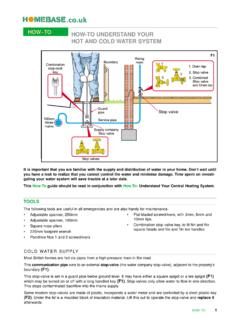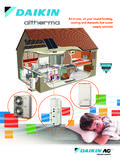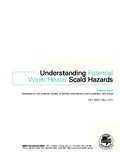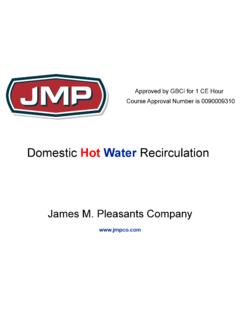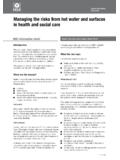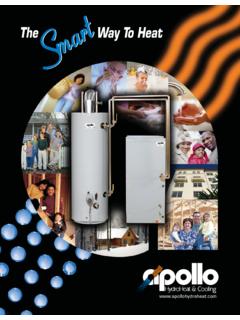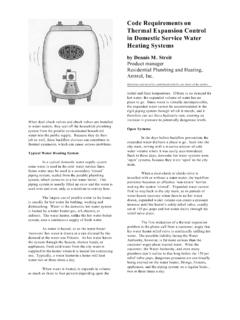Transcription of Test procedures, measur ements and standards for domestic ...
1 Wuppertal Institute for Climate, Environment and Energy. Appliances GuideGet super efficient appliancesTe s t p r o c e d u r e s , m e a s u rements and standards for domestic washing machines Authors Dr. Claus Barthel Thomas G tz Published 03/2013 Test procedures , measurements and standards for domestic washing machines Wuppertal Institute for Climate, Environment and Energy. 2 Index 1 Measurement standards and test procedures .. 3 2 Different test standards .. 3 3 Why different test standards ? .. 9 4 References .. 10 Test procedures , measurements and standards for domestic washing machines Wuppertal Institute for Climate, Environment and Energy.
2 3 1 Measurement standards and test procedures A standard definition for energy consumption and a test procedure to meas-ure it are necessary to ensure market transparency and to apply effective policies. Electricity consumption by washing machines is measured in ac-cordance with four main test standards in different world regions. A standard definition for the specific energy consumption per unit is necessary to compare the energy and water consumption of washing machines. Furthermore, a test procedure is needed to measure this specific energy and water consumption.
3 The definition and the test procedure together form a test standard. Such a standard makes it possible to introduce Minimum Performance standards and labels. Based on the measured specific energy or water consumption, the efficiency of washing machines is defined as the degree of electricity or water consumption per wash cycle, per year or per kg of laundry, or vice versa. In addition, the functional performance is defined in comparison to a reference appliance. This relationship between an individual appliance and the reference appliance can also be expressed for energy efficiency using an energy efficiency index ( in the recent European Standard).
4 The standard energy consumption of the reference appliance is also often expressed as a function of the washing capacity (kg) or the volume (litres, cubic feet). 2 Different test standards There are four main test standards that have been adopted for washing machines almost worldwide. The IEC / EN and ANSI / AHAM standards are the most important reference standards . The EU and many other countries with mostly horizontal-axis washing machines have based their test standards on IEC, often with more or less significant modifications.
5 The harmonized AS / NZS standard in Austral-ia/New Zealand and the Japanese JIS C standard also refer to early revisions of IEC 60456, but differ considerably from the original document nowadays, especially considering the vertical-axis washing technology dominating these markets. In North America and parts of South America with predominantly vertical-axis machines, test standards are based on the AHAM reference test standard. Table 1 gives an overview of their main characteristics and differences. Test procedures , measurements and standards for domestic washing machines Wuppertal Institute for Climate, Environment and Energy.
6 4 Table 1: General testing conditions under the main standards and examples of labels based on the standards Testing Parameters AS/NZS ( , based on IEC 60456:1994 but differs significant-ly) ANSI/AHAM (HLW-1-2007) IEC / EN (60456) JIS C (9606, focus on vertical axis washing machines (impeller or agitator) Selection of coun-tries applying the test standards Australia, Indone-sia, New Zealand USA, Canada (reference standard), Mexico, Chile EU, China / Hong Kong, South Korea (KS C EC 60456, Identical to IEC 60456:2003), adapted stand-ard for horizontal axis machines), India (uses a variant) Brazil and many others.
7 Refer-ence Test Standard for Turkey, Vietnam, The Philippines, South Africa, Singapore, Ar-gentina, Iran, Russia (APEC/CLASP 2011 Japan, South Korea (KS C 9608), Thai-land, Taiwan, China / Hong Kong (vertical axis ma-chines) Load capacity Manufacturer-rated capacity in kg (mixture of materials defined in the standard). Standard type household clothes washers: Tub/Drum capacity of ft3 (45 L / 13 gallons) of water or more. Manufacturer-rated capacity in kg Wash temperature Nominally 40 C (technical re-quirement: >35 C), Cold wash : Variable (de-pending on washer unit type, water 60 C Cotton Cycle (without pre-wash) in accordance with Use of cold water at 20 C (meas-ured at 65% Test procedures , measurements and standards for domestic washing machines Wuppertal Institute for Climate, Environment and Energy.)))
8 5 20 C. and tempera-ture control), Typical tests : (adjusted) average of a combination of tempera-tures. the manufactur-er s instructions. At least 5 com-plete cycles. air humidity) Energy consumption Energy Consump-tion (Full pro-gramme cycle declared by manufacturer as warm wash in-cluding energy embodied in ex-ternal hot water if not self-heated (Unit: kWh/load). Annual energy consumption incl. Power consumed in Off mode and end of cycle mode. Identical for the declared cold wash pro-gramme. (Adjusted) sum of elec-trical energy consumption, the hot water energy con-sumption and the energy required for removal of the remaining moisture in the wash load, Typically averaged across a number of cycle types.
9 Total Energy = Tested Energy + Cold Water Cor-rection + Hot Water Correc-tion, Average of 5 cycles Test proce-dure does not specify ener-gy consump-tion meas-urements Energy efficiency Model energy consumption di-vided by the de-clared load capac-ity. Modified Energy Factor (MEF), quo-tient: capacity clothes con-tainer divided by the total energy con-sumption per cycle (ft3/kWh/cycle) Total Energy of model divided by rated load (kWh/cycle/kg). Water consumption Complete cycle of warm or cold wash, Label: An-nual water con-sumption WF: quotient: total weighted per-cycle water consumption / capacity clothes Complete vol-ume of water used during energy con-sumption test (litres).
10 Average of 5 cycles Test procedures , measurements and standards for domestic washing machines Wuppertal Institute for Climate, Environment and Energy. 6 washer. Total weighted per-cycle water consumption: variable de-pending on washer unit type, water and tempera-ture control typically av-eraged across a number of cycle types. Wash quality rating (cleaning perfor-mance) Soil removal value (%), not measured in cold test. No wash performance test Soiled test strips, Ratio of average reflectance measured (com-pared with refer-ence unit).
